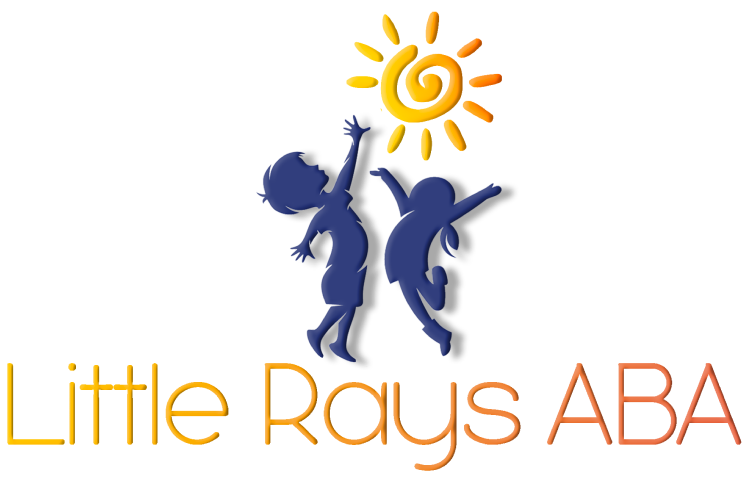Understanding ADHD and Autism Spectrum Disorder
Co-Occurrence of ADHD and ASD
Attention Deficit/Hyperactivity Disorder (ADHD) and Autism Spectrum Disorder (ASD) often co-occur, highlighting the complex relationship between the two conditions. Research indicates that approximately 30-50% of individuals diagnosed with ASD also exhibit elevated levels of ADHD symptoms, while about two-thirds of individuals with ADHD show features of ASD.
This high prevalence of co-occurrence suggests a significant overlap in the behavioral and neurological characteristics of ADHD and ASD. To delve deeper into their differences, check out our article on autism and ADHD differences.
Overview of ADHD and ASD
ADHD and ASD are both neurodevelopmental disorders, but they present distinct yet overlapping challenges. ADHD is characterized by persistent patterns of inattention, hyperactivity, and impulsivity that interfere with functioning or development. Meanwhile, ASD is marked by difficulties in social communication and interaction, alongside restricted or repetitive behaviors.
ADHD Characteristics:
- Inattention: Difficulty sustaining focus, makes careless mistakes.
- Hyperactivity: Fidgeting, inability to stay seated.
- Impulsivity: Interrupting others, inability to wait for a turn.
ASD Characteristics:
- Social Communication: Struggles with eye contact, understanding social cues.
- Behavioral Patterns: Repetitive actions, specific routines.
To understand the core symptoms, visit autism vs ADHD symptoms.
When diagnosing these conditions, healthcare providers use various diagnostic tools and approaches to distinguish between the two, often recognizing that many individuals may exhibit characteristics of both disorders, which necessitates a comprehensive and nuanced assessment and treatment approach.
By understanding the complexities and the degree of overlap between ADHD and ASD, individuals and caregivers can better navigate the challenges and seek appropriate interventions.
For further insights into their similarities, explore the article on autism-ADHD similarities.
Symptoms and Diagnosis
ADHD Symptoms and Characteristics
Attention-Deficit/Hyperactivity Disorder (ADHD) is primarily characterized by symptoms of inattention, hyperactivity, and impulsivity that significantly impact daily functioning. Key symptoms include:
- Inattention: Difficulty focusing on tasks, being easily distracted, frequently losing or misplacing items.
- Hyperactivity: Excessive fidgeting, an inability to stay seated in school or work settings, incessantly talking.
- Impulsivity: Interrupting conversations, making hasty decisions without considering consequences, difficulty waiting their turn.
Children with ADHD might show signs such as restlessness, impulsivity, and difficulty paying attention. It's worth noting that hyperactivity levels tend to decrease longitudinally as these children grow older.
| Symptom | Definition |
|---|---|
| Inattention | Difficulty focusing, easily distracted |
| Hyperactivity | Excessive fidgeting, unable to stay seated |
| Impulsivity | Interrupting conversations, making hasty decisions |
ASD Symptoms and Characteristics
Autism Spectrum Disorder (ASD) is typically diagnosed in early childhood and is characterized by challenges in social interaction, communication, and repetitive behavior patterns. Core symptoms include:
- Social Interaction Issues: Avoiding eye contact, disinterest in engaging with others, difficulty understanding social cues.
- Communication Difficulties: Slow or absent speech development, limited use of gestures, difficulty in sustaining conversations.
- Repetitive Behaviors: Inflexibility in routines, repetitive movements, intense focus on specific interests.
Children with ASD may exhibit behaviors like avoiding eye contact, showing disinterest in social interactions, and having a slow or absent speech development.
| Symptom | Definition |
|---|---|
| Social Interaction | Avoiding eye contact, difficulty understanding cues |
| Communication | Slow speech development, limited use of gestures |
| Repetitive Behaviors | Inflexibility in routines, repetitive movements |
Diagnostic Tools for ADHD and ASD
Distinguishing between ADHD and ASD in individuals with both disorders can be challenging due to overlapping symptoms. Thus, a comprehensive diagnostic approach is essential. Some commonly used diagnostic tools include:
- Neuropsychological Tests: Evaluate higher cognitive functions but have limitations in differentiating between ASD and ADHD.
- Rapid Letter Naming Task: Shows differences in performance between children with ASD and those with ADHD.
- Behavioral Assessments: Include structured interviews and questionnaires completed by parents, teachers, and caregivers.
For individuals displaying a combination of ADHD and ASD traits, a multidisciplinary approach involving psychologists, pediatricians, and neurodevelopmental specialists is often required. This ensures an accurate diagnosis and the development of an effective treatment plan.
By understanding the symptoms and diagnostic tools, one can better navigate the complexities of ADHD and ASD, ensuring effective and personalized care. F
Impact and Impairments
When ADHD and Autism Spectrum Disorder (ASD) co-occur, the challenges faced can be more complex than either disorder alone. This section explores the impacts of co-occurring ADHD and ASD, as well as the psychological and social implications.
Impacts of Co-Occurring ADHD and ASD
Individuals with both ADHD and ASD often experience more profound impairments compared to those with only one of these conditions. These combined impairments can affect various aspects of their daily lives, including cognitive and social functioning. Studies show that individuals with co-occurring ADHD and ASD are more likely to experience additional psychopathology, take psychiatric medication, and have a lower quality of life than those with only ASD.
Here are some key areas where these impairments manifest:
- Daily Life: Co-occurring ADHD and ASD lead to greater difficulties in managing daily tasks, time management, and committing to long-term goals.
- Cognitive Functioning: There is generally a lower level of cognitive functioning, which can complicate learning processes and educational attainment.
- Social Impairment: Severe social difficulties are more prevalent, making it challenging to form and maintain relationships.
- Adaptive Functioning: There are significant delays in adaptive functioning, meaning it can be difficult for individuals to adjust to new or changing environments and expectations.
| Aspect | Impact Level |
|---|---|
| Daily Life | High |
| Cognitive | Lower |
| Social | Severe |
| Adaptive | Delayed |
Psychological and Social Implications
The intertwined nature of ADHD and ASD also has considerable psychological and social implications.
- Psychological Health: Those with both conditions are often more prone to anxiety, depression, and other mood disorders. The added stress of managing dual diagnoses can exacerbate these conditions.
- Social Relationships: Social difficulties are a major concern, leaving individuals more susceptible to peer rejection and fewer friendships. These social challenges can lead to a sense of isolation and impact overall mental well-being.
- Quality of Life: The cumulative effect of these impairments often results in a lower quality of life, as individuals struggle more than their peers in academic, social, and, later in life, professional settings.
It's important to consider these impacts as part of the broader picture when evaluating treatment approaches and solutions.
By understanding the complexities and challenges of co-occurring ADHD and ASD, caregivers, educators, and healthcare providers can better support those impacted.
Treatment Approaches
Addressing the unique needs of individuals with co-occurring ADHD and Autism Spectrum Disorder (ASD) often involves a multifaceted approach that includes both pharmacological interventions and psychosocial therapies.
Pharmacological Interventions
Pharmacological treatments for individuals with ADHD and Autism Spectrum Disorder primarily focus on managing the symptoms of ADHD to improve daily functioning. Given the complexities of having dual diagnoses, the chosen medications need to be carefully monitored for efficacy and side effects.
| Medication Type | Common Uses | Notes |
|---|---|---|
| Stimulants | ADHD symptoms | Effective for many with ADHD but may cause social withdrawal and irritability in those with both ADHD and ASD |
| Antipsychotics | ASD symptoms | Prescribed to manage irritability and aggression in individuals with ASD |
| SSRIs (Selective Serotonin Reuptake Inhibitors) | Anxiety, Depression | Often used to treat co-occurring anxiety and mood disorders |
For individuals with ADHD combined type, stimulant medications are often prescribed. However, for those with both ASD and ADHD, medications such as antipsychotics and SSRIs are more common due to their broader spectrum of symptom management.
Psychosocial Therapies
Limited research exists on the effectiveness of psychosocial interventions for individuals with co-occurring ADHD and ASD. However, combining these therapies with pharmacological treatments can potentially yield better outcomes.
Behavioral Therapy
Applied Behavior Analysis (ABA) and Cognitive Behavioral Therapy (CBT) are two common forms of behavioral therapy used to manage symptoms of both ADHD and ASD. These therapies can help improve social skills, reduce problem behaviors, and increase adaptive functioning.
Social Skills Training
Social skills training focuses on teaching individuals how to interact appropriately with others and manage social situations. This can be particularly beneficial for those with ASD who struggle with social cues and interactions.
| Therapy Type | Targeted Issues | Benefits |
|---|---|---|
| Behavioral Therapy | Behavioral and emotional regulation | Improves problem behaviors and coping strategies |
| Social Skills Training | Social interactions | Enhances communication, reduces social anxiety |
Individuals with both ADHD and ASD may benefit from specialized treatment plans that incorporate a combination of these therapies, tailored to their unique needs.
Genetics and Environmental Influences
Understanding the etiology of ADHD and autism spectrum disorder (ASD) involves examining both genetic correlations and environmental factors. Multiple influences likely interact to contribute to the coexistence and shared characteristics seen in these neurodevelopmental disorders.
Genetic Correlations
Studies have consistently found moderate to strong genetic correlations between ADHD traits and ASD traits in children and adolescents, highlighting associations between these neurodevelopmental disorders. Family studies further support this connection; relatives of individuals with ASD are at a higher risk of also receiving a diagnosis of ADHD. This suggests a potential shared genetic origin for these conditions.
Researchers identified the highest genetic correlation between Hyperactivity/Impulsivity (HI) and Restricted and Repetitive Behaviors (RRB), while the lowest correlation existed between HI and Social Interaction Challenges (SIC). These findings illustrate the varying degrees of genetic overlap among different symptom dimensions of ADHD and ASD.
| Correlation | ADHD Trait | ASD Trait |
|---|---|---|
| Highest | HI | RRB |
| Lowest | HI | SIC |
Environmental Factors
While genetics play a significant role, environmental factors also contribute to the development and presentation of ADHD and autism spectrum disorder. Multiple influences likely interact to contribute to the co-occurrence and shared features observed in ADHD and ASD. However, the exact environmental triggers are varied and often influence individuals differently.
Studies have shown that genetic and non-shared environmental effects have similar impacts on the relationship between ADHD and ASD traits, while shared environmental effects are minimal. This implies that unique environmental experiences outside the family unit play a more prominent role than those shared among family members.
By examining these genetic and environmental influences, researchers and clinicians can better understand the complexities of ADHD and autism spectrum disorder. This knowledge can inform more targeted treatments and interventions for individuals dealing with these conditions.
Comorbid Physical Health Conditions
Understanding the comorbid physical health conditions associated with both ADHD and Autism Spectrum Disorder (ASD) can provide a clearer picture of their overall impact on an individual's well-being. This section delves into the common physical health ailments seen in individuals diagnosed with both ADHD and ASD and the genetic factors influencing these conditions.
Shared Physical Health Conditions
Individuals with ADHD and ASD are often afflicted by various physical health conditions. Common comorbidities include epilepsy and gastrointestinal disorders.
| Condition | ADHD | ASD |
|---|---|---|
| Epilepsy | Common | Common |
| Gastrointestinal Issues | Common | Common |
| Constipation | Sometimes | Common |
| Sleep Disorders | Common | Common |
Understanding these shared conditions helps health providers offer a comprehensive approach to care. Both disorders significantly impact the central nervous system, influencing numerous vital functions such as movement, language, memory, and social skills.
Genetic Effects on Physical Health Conditions
Research indicates that many of the physical health conditions co-occurring with ADHD and ASD have strong genetic underpinnings. The table below shows the genetic correlations of epilepsy with clinical and subclinical autism:
| Health Condition | Genetic Correlation (Clinical Autism) | Genetic Correlation (Subclinical Autism) |
|---|---|---|
| Epilepsy | 0.50 | 0.35 |
Shared genetic factors also contribute to gastrointestinal problems observed in both disorders. Significant phenotypic correlations exist between these health conditions and both ADHD and ASD. For example, the same genetic markers that predispose an individual to ASD may also increase the likelihood of having gluten intolerance or chronic constipation.
Understanding these genetic links helps clinicians better anticipate and address various health issues that may arise in individuals diagnosed with ADHD and ASD, ensuring a more well-rounded approach to their treatment and care.
Final Thoughts
Understanding the overlap between ADHD and Autism Spectrum Disorder is key to providing effective support and intervention. While these conditions share some similarities, they also have distinct challenges that require tailored approaches.
At Little Rays ABA, we are committed to helping individuals and families navigate these complexities through evidence-based ABA therapy. If you're looking for personalized support for your child, contact us today to learn more about how we can help!
Sources:
- https://pmc.ncbi.nlm.nih.gov/articles/PMC3441928/
- https://pmc.ncbi.nlm.nih.gov/articles/PMC10983102/
- https://chadd.org/about-adhd/adhd-and-autism-spectrum-disorder/
- https://www.apa.org/ptsd-guideline/patients-and-families/cognitive-behavioral
- https://pubmed.ncbi.nlm.nih.gov/30191778/
- https://pmc.ncbi.nlm.nih.gov/articles/PMC6601357/
- https://www.nature.com/articles/s41598-020-78627-1
Unlock Your Child's Potential with Expert ABA Therapy!
At Little Rays ABA, we provide compassionate, evidence-based ABA therapy to help children with autism thrive. Our personalized approach fosters growth in communication, social skills, and independence.
Get In Touch With Us Today to Get Started With ABA Therapy!
Related Posts
MENU
GET IN TOUCH
7117 San Salvador Dr Boca Raton, FL 33433
3200 Collins Ave Miami Beach, FL 33140





